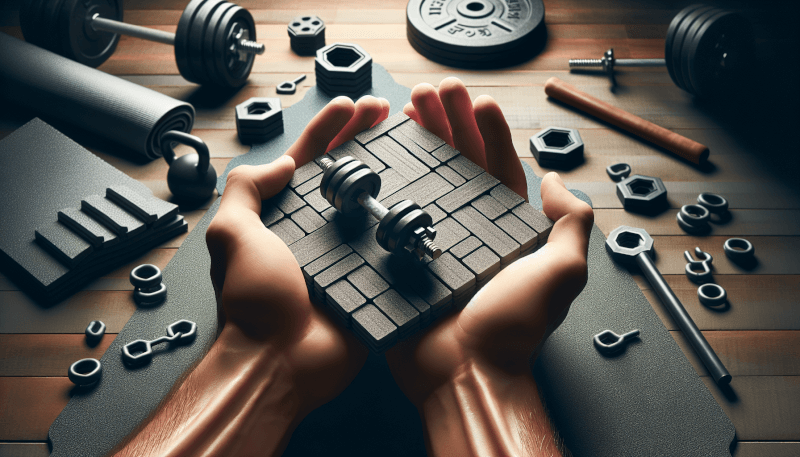Are you looking to create the perfect home gym but unsure about the flooring options available? Look no further! In this article, we will guide you through a variety of DIY home gym flooring options and provide you with an easy-to-follow installation guide. Whether you prefer the comfort of rubber, the durability of vinyl, or the versatility of interlocking tiles, we have got you covered. Say goodbye to slippery surfaces and hello to a safe and functional workout space right in the comfort of your own home. Let’s get started!
Choosing the Right Flooring Material
When it comes to setting up a home gym, choosing the right flooring material is crucial. The flooring you use can greatly impact your workout experience, providing comfort, safety, and durability. There are various options available, each with its own unique features and benefits. In this guide, we will explore five popular flooring materials for home gyms: rubber flooring, foam flooring, vinyl flooring, cork flooring, and carpet tiles. By understanding the characteristics of each material, you can make an informed decision that suits your needs and preferences.
Rubber Flooring
Rubber flooring is an excellent choice for home gyms due to its durability and shock absorption properties. If you enjoy high-impact workouts or weightlifting, rubber flooring can help protect your joints and minimize the risk of injuries. It provides excellent traction, reducing the chances of slips and falls during vigorous exercises. Moreover, rubber flooring is easy to clean and maintain, making it an ideal option for those who want a hassle-free gym flooring solution.

Foam Flooring
Foam flooring is another popular choice for home gyms, especially for activities that involve a lot of floor work or stretching. The soft and cushioned surface of foam flooring provides exceptional comfort and support, making it perfect for yoga, pilates, or other low-impact workouts. It is also great for shock absorption, minimizing the impact on your joints during exercises. Additionally, foam flooring is lightweight and easy to install, making it a versatile option for DIY enthusiasts.
Vinyl Flooring
Vinyl flooring is known for its durability and affordability. It is a highly versatile option that comes in a wide range of styles and designs, allowing you to create the perfect aesthetic for your home gym. Vinyl flooring is resistant to water, stains, and scratches, making it easy to clean and maintain. It provides good shock absorption and noise reduction, creating a comfortable and quiet workout environment. Vinyl flooring is also relatively easy to install, making it a popular choice among homeowners.
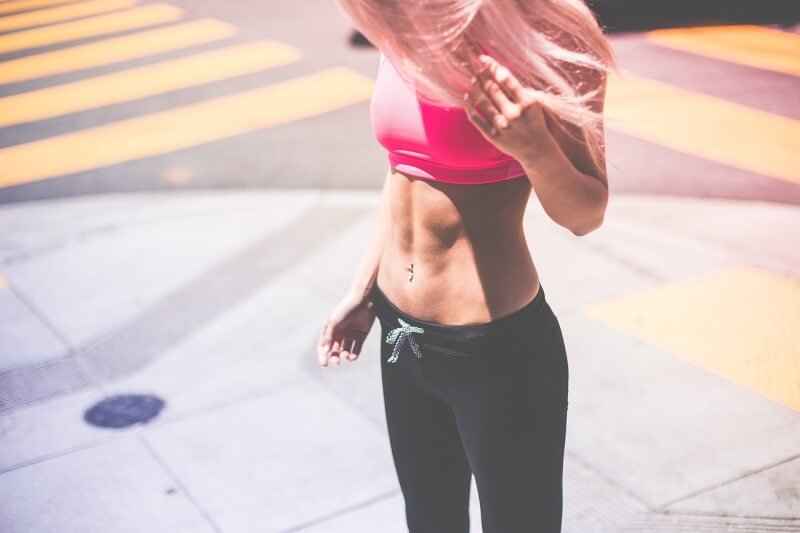
Cork Flooring
Cork flooring is a unique and eco-friendly option that is gaining popularity among home gym enthusiasts. It is made from the bark of the cork oak tree, making it a sustainable and renewable material. Cork flooring is known for its natural cushioning and shock-absorbing properties, providing a comfortable and joint-friendly surface for workouts. It is also hypoallergenic, antimicrobial, and resistant to mold and mildew, making it a healthy and hygienic choice for your home gym.
Carpet Tiles
Carpet tiles offer a soft and plush surface that is perfect for activities that require extra comfort and insulation. They are available in various styles, colors, and patterns, allowing you to customize the look of your home gym. Carpet tiles are easy to install and replace, making them a practical choice for those who want a versatile flooring option. They also help with noise reduction, making your workouts quieter and more enjoyable. However, it’s important to note that carpet tiles may not be suitable for high-impact exercises or heavy equipment.
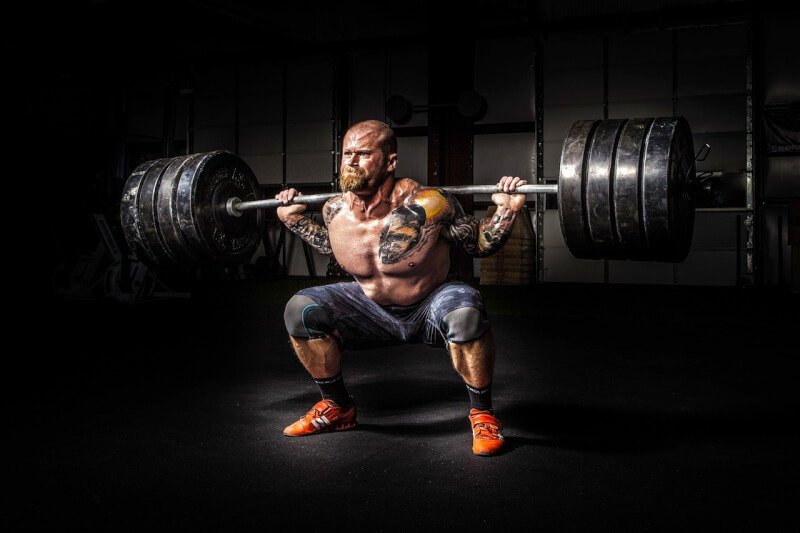
Factors to Consider
When choosing the right flooring material for your home gym, it’s essential to consider several factors to ensure you make the best decision.
Durability
Since your home gym flooring will be subjected to constant wear and tear, choosing a durable material is crucial. Look for flooring options that are designed to withstand heavy foot traffic, equipment weight, and the impact of vigorous exercises.
Shock Absorption
A good home gym flooring should provide adequate shock absorption to minimize the impact on your joints and prevent injuries. Consider materials like rubber, foam, or cork that offer excellent cushioning and support.
Noise Reduction
If you live in an apartment or have neighbors close by, noise reduction is an important factor to consider. Look for flooring materials that can absorb sound and reduce noise transmission, such as rubber or carpet tiles.
Maintenance
Consider the maintenance requirements of each flooring material. Some options, like rubber and vinyl, are easy to clean and maintain, while others, like carpet tiles, may require more frequent vacuuming or professional cleaning.
Price
Set a budget for your home gym flooring project and compare prices of different materials. Keep in mind that while some options may be more expensive initially, they can save you money in the long run by being more durable and low-maintenance.
Preparing the Subfloor
Before installing your chosen flooring material, it’s important to prepare the subfloor properly. This ensures a smooth and stable surface for your new flooring, preventing any issues that may arise in the future.
Cleaning the Subfloor
Start by thoroughly cleaning the subfloor to remove any dirt, debris, or dust. Sweep or vacuum the area and use a mild detergent or cleaner to remove any stains or spills. Let the subfloor dry completely before proceeding with the installation.
Repairing Damages
Inspect the subfloor for any damages, such as cracks, holes, or uneven spots. Repair these issues using a suitable filler or patching compound. Smooth out any rough patches and ensure the subfloor is level throughout.
Leveling the Surface
A level surface is essential for proper installation and longevity of your gym flooring. Use a leveling compound or self-leveling underlayment to fill in any low spots or uneven areas. Follow the manufacturer’s instructions to ensure a smooth and level surface.
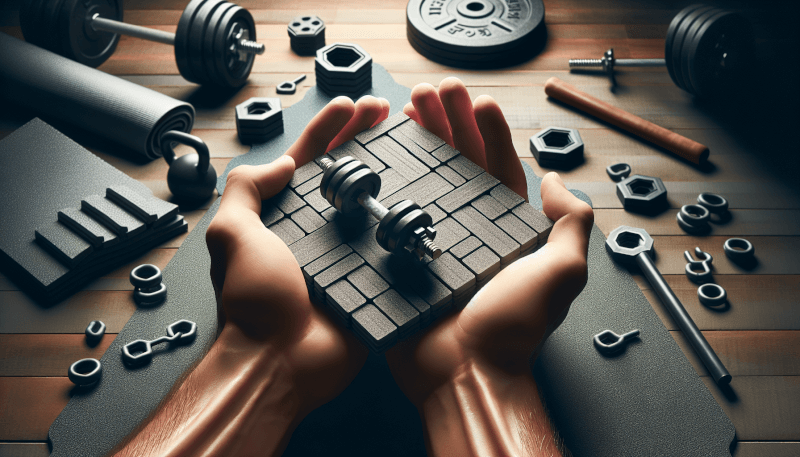
Installing Rubber Flooring
Rubber flooring is a popular choice for home gyms due to its durability and ease of installation. Here is a step-by-step guide to help you install rubber flooring in your home gym.
Gathering the Necessary Tools
Before you begin, gather all the necessary tools and materials for the installation. This may include a utility knife, straightedge, adhesive, trowel, and a roller.
Measuring and Cutting Rubber Rolls or Tiles
Measure the dimensions of your home gym and cut the rubber rolls or tiles accordingly. Use a straightedge and a utility knife to make precise cuts. Ensure the rubber flooring fits snugly against the walls and obstacles.
Applying Adhesive or Interlocking the Tiles
Follow the manufacturer’s instructions to apply adhesive on the subfloor or interlock the rubber tiles. Roll the rubber flooring with a heavy roller to ensure proper adhesion and eliminate any air bubbles.
Installing Foam Flooring
Foam flooring is a lightweight and comfortable option for home gyms. Here are the steps to install foam flooring in your gym space.
Unrolling and Allowing the Foam to Expand
Unroll the foam flooring and allow it to expand for the recommended time specified by the manufacturer. This will ensure the foam reaches its full size and shape before installation.
Interlocking the Foam Tiles
If your foam flooring consists of interlocking tiles, start by connecting them together. Make sure the tiles fit tightly and securely without any gaps.
Trimming Excess Foam
If necessary, use a utility knife or a straightedge to trim any excess foam that extends beyond the edges of your gym space. Make precise cuts to achieve a clean and polished look.
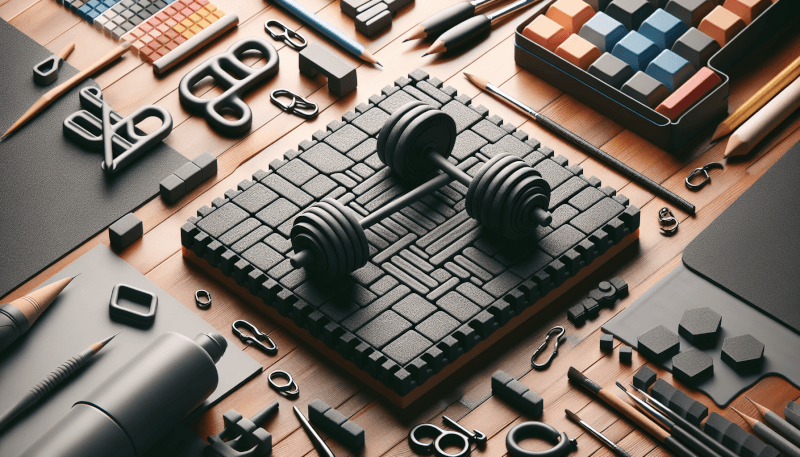
Installing Vinyl Flooring
Vinyl flooring offers durability and versatility for your home gym. Follow these steps to install vinyl flooring in your gym area.
Measuring and Cutting Vinyl Sheets
Measure the dimensions of your gym and cut the vinyl sheets accordingly. Leave a small gap around the edges to allow for expansion. Use a straightedge and a utility knife to make precise cuts.
Applying Adhesive and Placing the Initial Sheet
Apply adhesive on the subfloor, following the manufacturer’s instructions. Place the initial sheet of vinyl flooring, ensuring it is properly aligned with the walls or guidelines you have marked.
Securing Edges and Seams
Continue laying the vinyl sheets, securing the edges and seams tightly together. Trim any excess material and use a rolling pin or a roller to ensure proper adhesion.
Installing Cork Flooring
Cork flooring provides a unique look and feel for your home gym. Here’s how you can install cork flooring in your gym space.
Preparing the Cork Tiles
If your cork flooring comes in tiles, clean them thoroughly and let them acclimate to the room temperature for a recommended period. This allows the cork to adjust to the humidity and temperature of your gym area.
Applying Adhesive and Placing the Tiles
Follow the manufacturer’s instructions to apply adhesive on the subfloor or the back of the cork tiles. Place the tiles in a desired pattern, ensuring they are properly aligned and spaced.
Sealing the Surface
Once the cork tiles are securely in place, apply a recommended sealant to protect the surface from moisture and stains. Follow the instructions carefully to ensure proper application and drying time.
Installing Carpet Tiles
Carpet tiles offer a cozy and inviting surface for your home gym. Follow these steps to install carpet tiles in your gym area.
Cleaning the Subfloor
Start by cleaning the subfloor thoroughly, removing any dirt, dust, or debris. Ensure the subfloor is dry and free from any moisture or spills.
Starting with a Corner Tile
Begin installation by placing a corner tile in one corner of the room. Ensure it is properly aligned with the walls or guidelines you have marked.
Trimming and Fitting Tiles
Continue laying the carpet tiles, trimming them as needed to fit around obstacles or room edges. Make precise cuts to achieve a seamless look.
Securing the Carpet Tiles
Press down firmly on each carpet tile to ensure proper adhesion. Use a carpet roller or your feet to ensure the tiles are securely in place and properly interlocked.
Maintaining Your Home Gym Flooring
Proper maintenance is key to keeping your home gym flooring in top shape. Here are some tips to help you maintain your gym flooring for years to come.
Regular Cleaning Routine
Establish a regular cleaning routine for your gym flooring. Sweep or vacuum the floor regularly to remove dirt, dust, and debris. Mop the floor with a mild cleaner or water as needed, following the manufacturer’s instructions.
Avoiding Damages and Stains
Take precautions to avoid damages and stains on your gym flooring. Use equipment mats or protective pads under heavy equipment to prevent scratches or indentations. Clean up spills or sweat immediately to prevent staining or moisture damage.
Periodic Deep Cleaning
Periodically deep clean your gym flooring to remove any built-up dirt or grime. Follow the manufacturer’s recommendations for deep cleaning methods and products. Avoid using harsh chemicals or abrasive cleaners that may damage the flooring.
Conclusion
Choosing the right flooring material for your home gym is essential to creating a safe and comfortable workout space. Consider factors such as durability, shock absorption, noise reduction, maintenance, and price when making your decision. Whether you opt for rubber, foam, vinyl, cork, or carpet tiles, proper installation and maintenance will ensure the longevity of your home gym flooring. So, go ahead and transform your space into the perfect workout haven with the right flooring material and installation techniques. Happy exercising!

